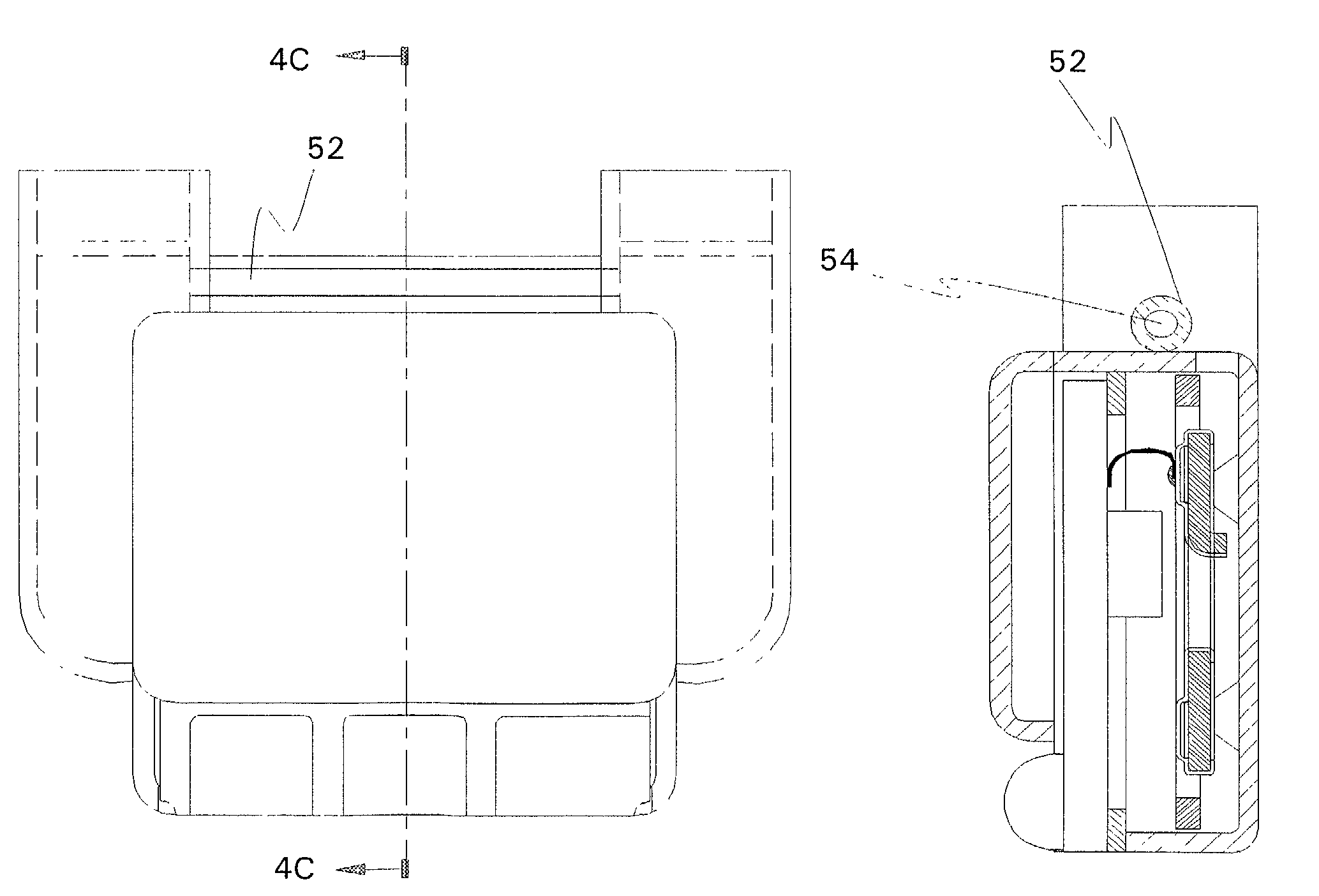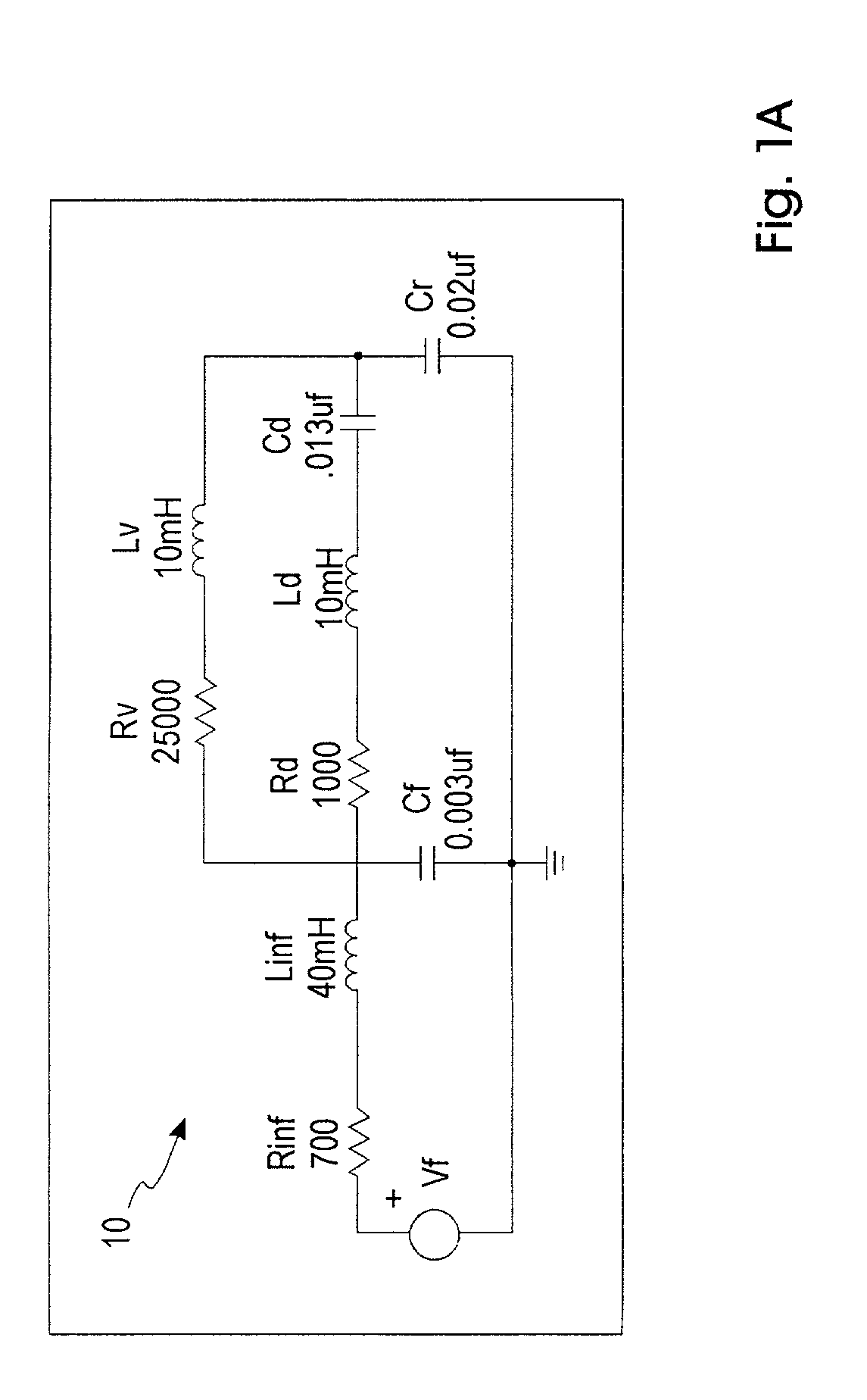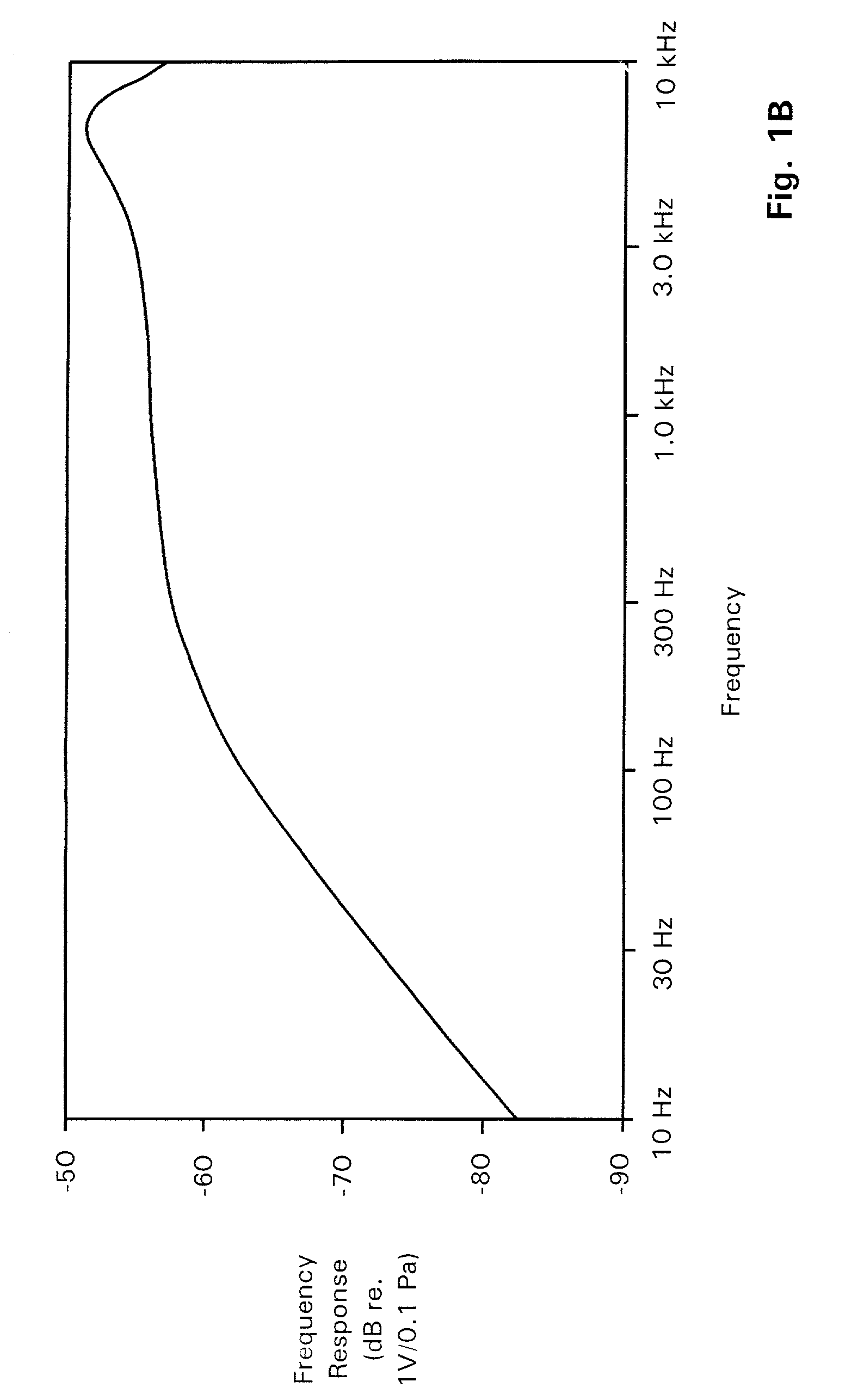Wind noise suppression in directional microphones
a directional microphone and wind noise technology, applied in the field of directional microphones, can solve the problems of poor signal-to-noise ratio of directional microphones at low frequencies, increased velocity of air, and increased noise of directional microphones, so as to reduce the likelihood of low frequency masking, less of a tendency for microphone overload, and the effect of wind noise suppression
- Summary
- Abstract
- Description
- Claims
- Application Information
AI Technical Summary
Benefits of technology
Problems solved by technology
Method used
Image
Examples
Embodiment Construction
[0026]To appreciate the present invention, reference is made to the well-known analogy between acoustical networks and electrical circuits. In this analogy, acoustical compliance is analogous to electrical capacitance, acoustical inertance (or mass) is analogous to electrical inductance, and acoustical resistance is analogous to electrical resistance. Several of the acoustical networks will be described as electrical networks with values placed on the components of the networks. It should be understood that the application of the present invention is not limited to only those values listed, but can be applied to directional microphones having various values for the acoustical resistances, acoustical compliances, and acoustical inertances of the components in their acoustical networks.
[0027]FIG. 1A illustrates an electrical schematic that is analogous to the acoustical network 10 for a standard pressure microphone. Rinf and Linf are the acoustical resistance of the input screen place...
PUM
 Login to View More
Login to View More Abstract
Description
Claims
Application Information
 Login to View More
Login to View More - R&D
- Intellectual Property
- Life Sciences
- Materials
- Tech Scout
- Unparalleled Data Quality
- Higher Quality Content
- 60% Fewer Hallucinations
Browse by: Latest US Patents, China's latest patents, Technical Efficacy Thesaurus, Application Domain, Technology Topic, Popular Technical Reports.
© 2025 PatSnap. All rights reserved.Legal|Privacy policy|Modern Slavery Act Transparency Statement|Sitemap|About US| Contact US: help@patsnap.com



